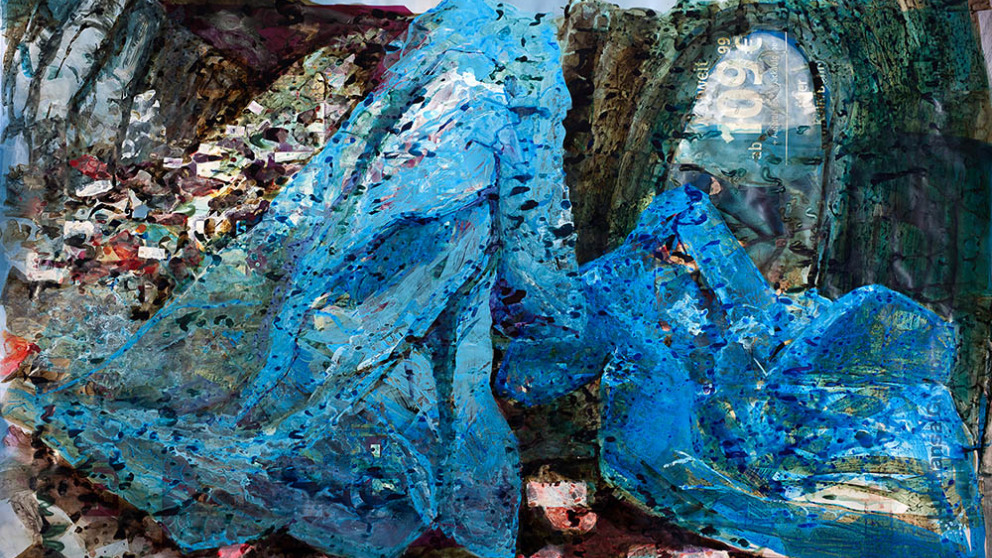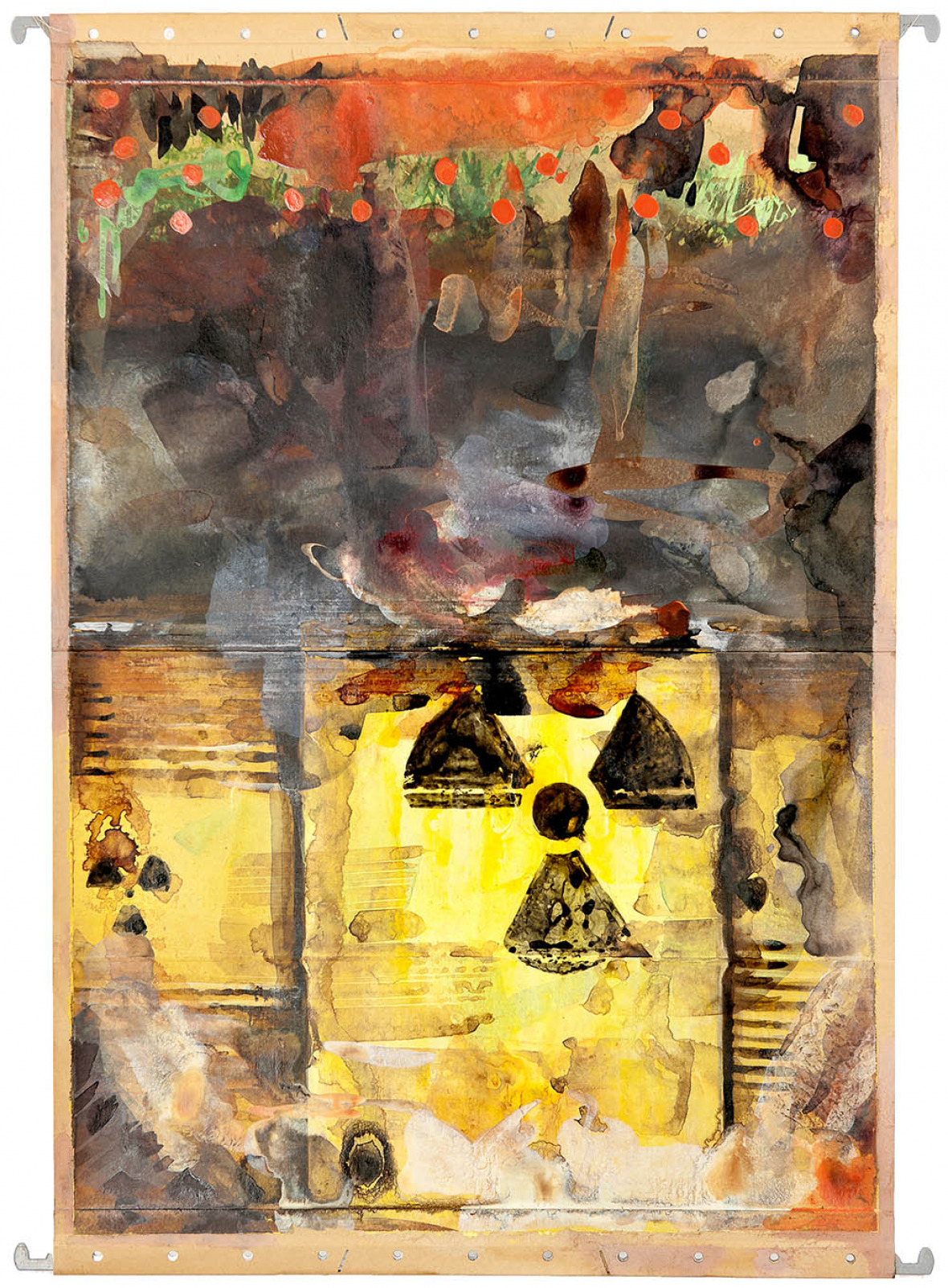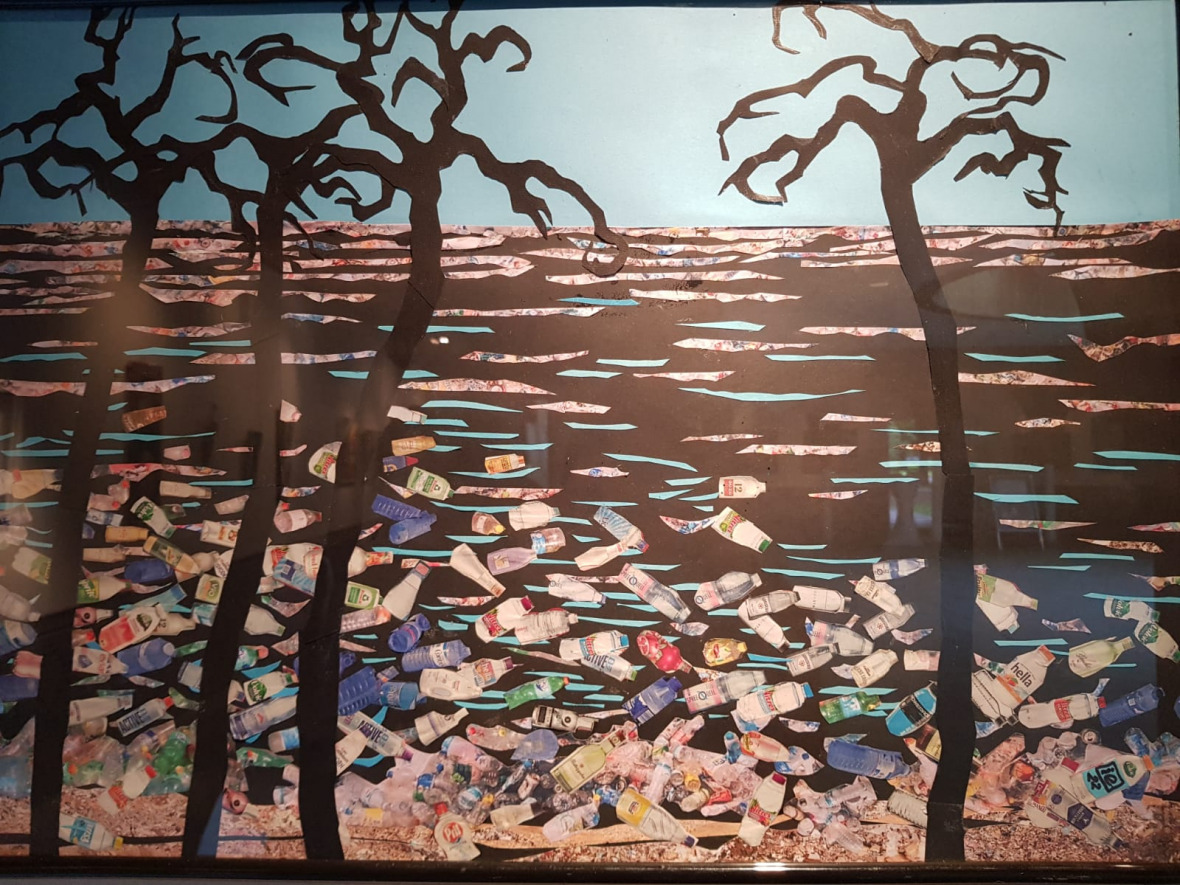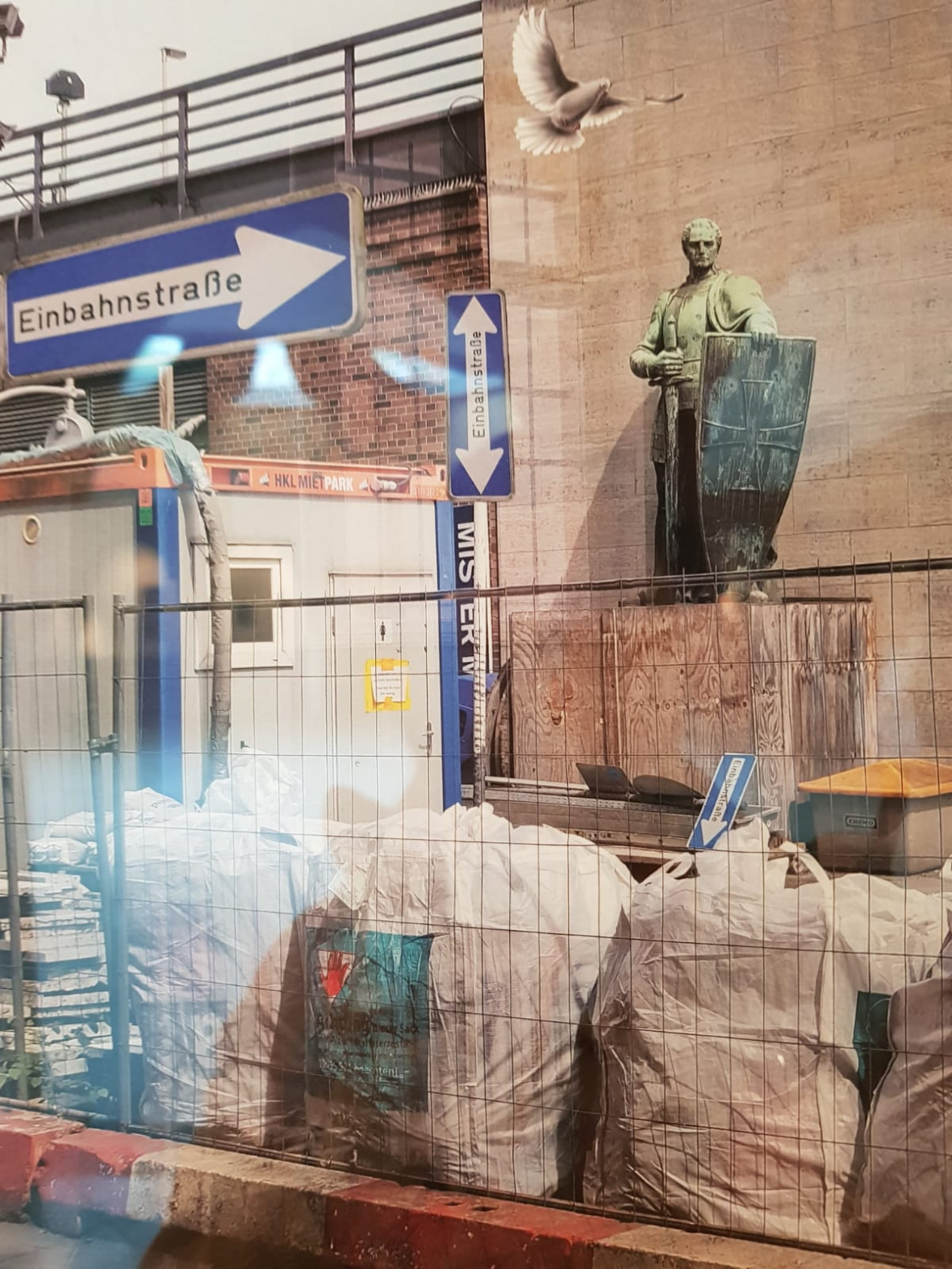Why we need ethnographic and artistic methods in climate research
25.10.2022

Photo (c) Marita Czepa
Ethnographic methods teach us that we can better understand the various spheres of life of a human group by studying traits such as their language, religious beliefs, rites, social structures, and artistic expressions. In this blog article, I argue that ethnographic methods are underestimated in climate-related research and could easily be integrated with artistic methodological formats. I believe that these artistic forms can bring research projects a more participatory character and might be more effective in creating awareness and building public trust towards scientists, especially concerning the topic of climate change and environmental justice. This might also help academic researchers make their publications more memorable, and contribute to the ultimate aim of transforming society towards more sustainable pathways.
The power of visuals in changing human behaviour
According to researchers from Michigan State University, the part of the brain that is responsible for seeing could be much more powerful than previously thought. Several years ago, the researchers investigated which parts of the brain showed activity following visual stimulation, and found that, in addition to the brain's higher-level areas such as the association cortex, decisions could also be made by the visual cortex. This finding revealed the power of the visual cortex in determining our choices, beyond interpreting images.
We might all have noticed that, sometimes, what we see affects us more than the words we hear. Thanks to visuals, information is quickly transmitted to our brains, affecting our emotions and how we react to things. Personally, I have always been aware that my visual experiences have stronger effects on my character; on who I want to be and how I should progress in my future.
The first documentary I watched about environmental politics was Darwin's Nightmare (Hubert Sauper, 2004). I remember that all the realities captured by the cameraperson were harrowing. The various life stories were from Tanzania, and they were real. The dark scenes, silent moments, people’s facial expressions… Nothing could be more effective in making me think about how we exploit nature and harm other people’s lives for the sake of some Western companies. I watched the film as part of my “IR Theories” course at Middle East Technical University, and it remains as one of the things from my college years that still have a place in my heart and mind
Why storytelling and visualising are more effective in social science research
Two months ago, I had the opportunity to join a summer school organised by Humboldt University, as a part of the Circle U University Alliance on the topic of “Communicating Climate Science”. The programme was full of lectures, exhibitions, and discussions. On the last day, we visited “Gärten der Welt”, located in the Marzahn district of Berlin. The employees were organising many creative events. We went to the “African Garden” and watched a short documentary about a case story from South Africa. It showed how water resources are denied to local people yet used in producing wine that will ultimately be exported to Europe. We then discussed the video and the concept of environmental justice. Our supervisor informed us that they also organise similar workshops for children, to encourage them to think about how the global system works and the stories behind the goods that we consume. After the workshop, we met with some photographers and visited their exhibition at the “Orientalischer Garten”, which was full of interesting images revealing our impact on the Earth system. They told us that they cooperated with external groups and would be happy to work with us too.

Photo: (c) Marita Czepa
My biggest take-away from that visit was learning more about the artistic forms that can be used in climate education and social science research. It has greatly inspired me in my own field and urged me to look for related academic sources in more depth. For me, there were two loops in academia: one was the lack of inclusion of society members in the research projects, and the second was the underestimation of art and photography as methodological approaches.

Photo: (c) Ingrid Engman
Throughout my university education in Turkey, I have always thought about how we fell short of incorporating creative forms of research. It was frustrating for me, because that was the reason why I chose social sciences: to go to the field, listen to other people, and write about their stories. Ethnography was really valuable in that sense because it had the power to integrate other people into the research and make their voices heard. Even though it was highly criticised in academic circles for not being sufficiently ‘scientific’, I always believed in the insights it could bring — more powerfully than anything else. This method was also open to embracing photography and documentary film-making as different methodologies, and so could help us to capture real life while giving other people the chance to express themselves in front of the camera. They could share their personal experiences related to climate change, or perceptions on the results of environmental policies. That could be a more effective approach in climate education.

Photo: (c) Antje Püpke
Psychologist Gregory Bateson advocates that artistic approaches develop a “connecting pattern” (1972). It enables us to see the world through different lenses while emphasising the connections between human experiences, people and their environment, mind and body, and among multiple academic disciplines. The artistic methods are useful not only because they facilitate this “joined up” thinking (O’Connor), but also because they push the limits of dominant methodological structures and invoke creativity instead. I think a return to ethnographic methods can be very inspirational in that sense, since it takes its power from personal experiences: perceptions, emotions, and metaphors. This might be something we need today for mobilising society around environmental protection. We might facilitate the interaction process by enabling people to listen to each other’s experiences and concerns, to build empathy, trust, and transparency in the long term.
What is missing in academia to raise awareness among the public?
As a Master’s student who has spent six years in academic circles, I have the impression that, as researchers, we sometimes have difficulty making our research outputs memorable for the outside world and reaching a wider audience coming from different backgrounds. We explain things mostly technically. Without doubt, we can say that the academic world is responsible for conducting formal scientific research. On the other hand, building connections between researchers and the public is seen as a task for journalism, not academia, which is something that I partly agree with.
I sometimes think aloud and discuss this with my friends, simply to imagine the extent to which we might make our research more accessible for others and how we can be more engaging; also to show that what we are doing is for the benefit of all. We want to make people think about their actions and the consequences.
As the author Luis J. Rodriguez says: “Art is the heart’s explosion on the world. Music. Dance. Poetry. Art on cars, on walls, on our skins. There is probably no more powerful force for change in this uncertain and crisis-ridden world than young people and their art. It is the consciousness of the world breaking away from the strangle grip of an archaic social order ”. I think he is right, and that art is something we should definitely utilise.
Different forms of art can be used for particular research purposes, depending on the context. I believe that each one has its own strengths. It might be a little tricky to find the right place for art in our research — especially finding the appropriate balance between the objectivity demanded by science and the relative perspective that artistic forms could bring.
And yes, it is true that art is subjective and might obscure the objectivity demanded of scientists — especially in today’s world, where we grapple with information overload and have a need for concrete results. Quantitative methods are a way to manage these data; it’s not surprising, therefore, that many research papers employ a range of quantitative methods. They help us to simplify things in order to reach conclusions, to be more representative and make comparisons.
I have observed that the presentation of most information has shifted towards statistics, even in the social sciences. In some ways this is a loss, because by observing the setting, interacting with people in the field, and becoming a part of their everyday lives, we learn things that statistics do not provide. We can use people’s personal experiences as valuable sources of knowledge.
From my perspective, the interpretations used in ethnography are meaningful; it gives value to social research and differs it from natural sciences. Photography is powerful not only in the sense that it visualises things and shows realities from various perspectives, but because it also triggers emotions and empathy by creating bonds between the subject, viewer, and photographer.
Ultimately, these emotions might help us to empathise, share feelings with others, build trust, and create a collaborative society in which each person considers that we are here for others and therefore have a responsibility to act accordingly. This is a power that positive sciences mostly fall short of and social sciences mostly ignore.
Furthermore, as Irwin and Michael (2003) indicate, researchers who underestimate the importance of ethnographic methods ignore the fact that “people are reflexive and moral beings, who are able to monitor the status of their understanding”. Strong social interaction with people might be missing in quantitative studies and may lead researchers to embrace more top-down approaches in knowledge production.
How can we boost the public’s knowledge of scientific information by using ethnographic and artistic methods?
In both the media and academic articles, we read a lot of information about climate change: melting glaciers, ozone depletion, ocean acidification, food insecurity, or climate migration. We analyse data, look at graphs, and speculate about the future. However, when it comes to changing our behaviours, we have difficulty in adapting ourselves accordingly — we sometimes tend to ignore the information we have or else do not trust what scientists say.
On the other hand, real life stories, photographs, and short films might leave powerful impacts on our minds, since they lead us to empathise and to understand the relationship between our decisions and their consequences for other people as well as nature. In addition, due to the participatory mechanisms that these methods provide, scientists can establish stronger relationships with the public and build trust, which might offer a solution to another difficulty we have; in gaining people’s trust as scientists with the information we provide.
In one project, my first formal interviewee said that she was happy to talk to me, since she found it provided the opportunity to share her experiences, which she had been thinking about from time to time but could not find the chance to say out loud. I was flattered and more motivated (since my first ever interview experience went so well), and this satisfaction was mutual.
I believe that each person has a great story, and these stories can be successfully captured by art, photographs and documentaries. These are things that we somehow witness in our everyday lives but could not find the chance to express. Giving this chance to people might play an important role in raising awareness, since it can also have a therapeutic effect by enabling people to think about what they have been through.
Having the last word
All in all, these are just the first impressions of a Master’s student. All the arguments are open to discussion and may be modified or rejected. I just think that trying out new research and communication methods and brainstorming about their possible benefits is a good exercise, which might lead us to think about the limits of the dominant methodological perspectives and the top-down systems in academia, of which we all are a part. In time, we may find some answers to our questions as researchers, such as: why our research findings often fail to have the significant impacts that we aim for — both on other people’s lives and for the planet; and how ethnographic and artistic methods may contribute to more inclusive, relevant, and impactful climate research.
Notes: The pictures are from another exhibition. Due to my low battery, I could not take photos during the summer school event; I went to the garden once again on another day, with the IASS intern Nele Schuff. However, we found out that the previous exhibition was over and there was another exhibition instead, full of pictures and photos taken by female artists. These were the pictures that took our attention and influenced us the most. I am happy to add another dimension to
my blog article by showing the female perspectives about environmental problems.
Short bio of the artist Marita Czepa:
1956 born in Demmin | 1980–2012 Work as computer scientist and cultural manager | 2012 - 2017 Studies at the Academy of Painting Berlin, master student of Ute Wöllmann | since 2014 represented by ROOT Gallery, Berlin | since 2017 lecturer and freelance artist | lives and works in Berlin
PARTICIPATION IN PLEINAIRS FOR THE ENVIRONMENT "ROOT on the road" with Galerie ROOT, Berlin: 2019 On the tracks of our plastic waste from Berlin to Schleswig-Holstein on the beaches of the Baltic Sea | 2016 On the tracks of the Castor transports from Berlin to Gorleben | 2015 Along the power line through the Uckermark region
FAIR PARTICIPATIONS: 2019 art KARLSRUHE | 2018 art KARLSRUHE |
2013 Contemporary Art Ruhr (C.A.R.)
www.marita.czepa.net